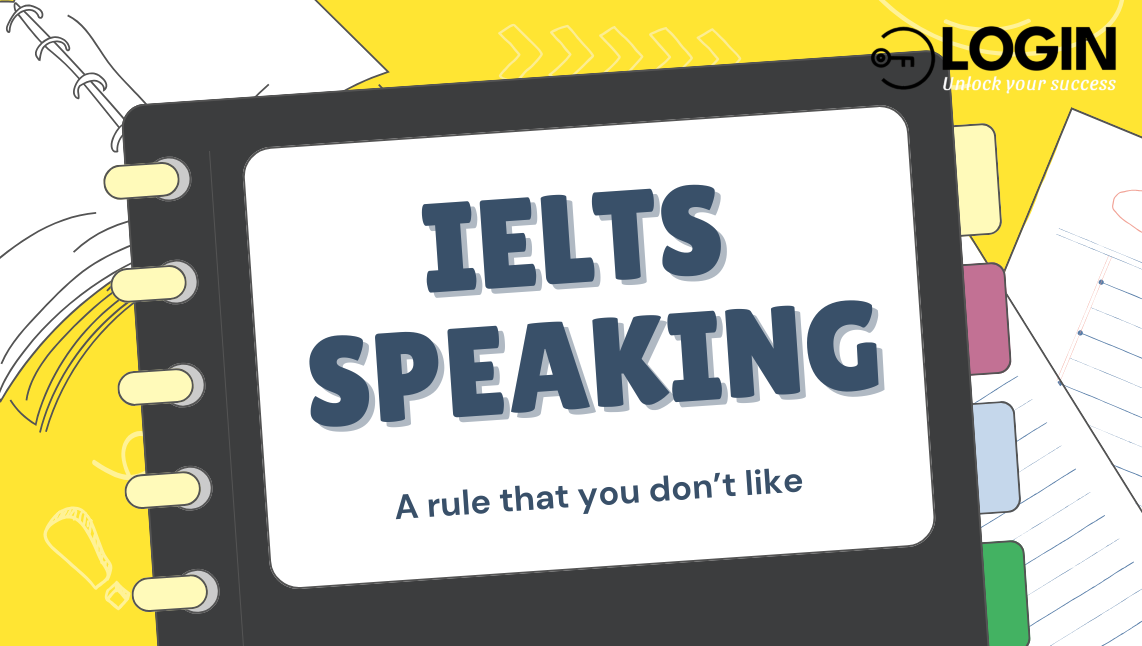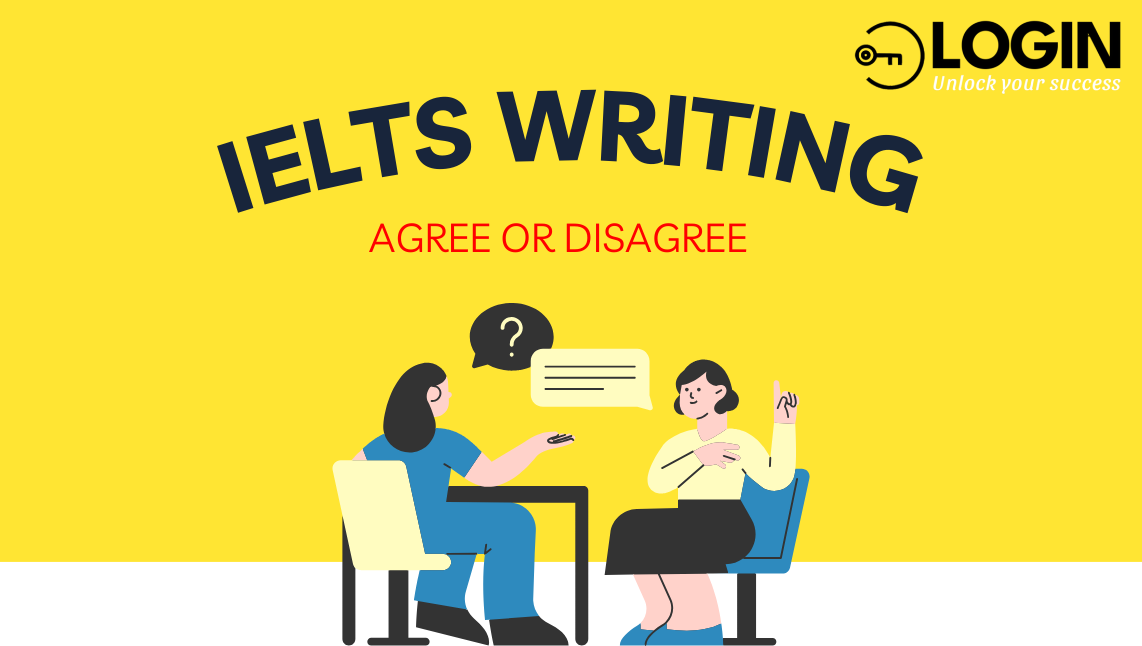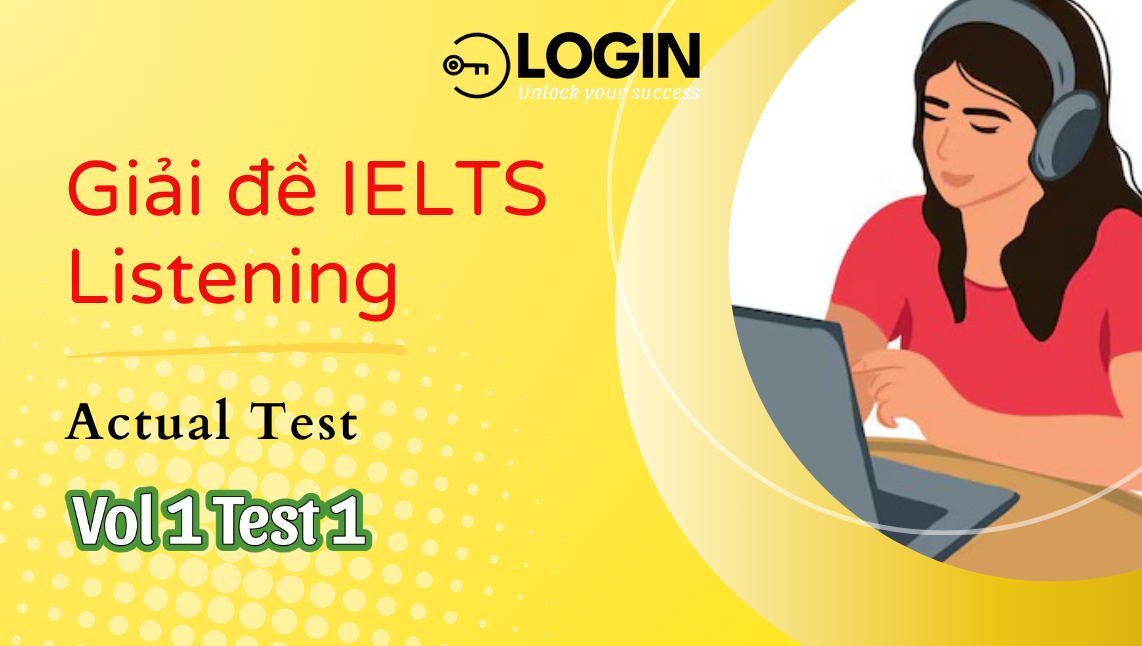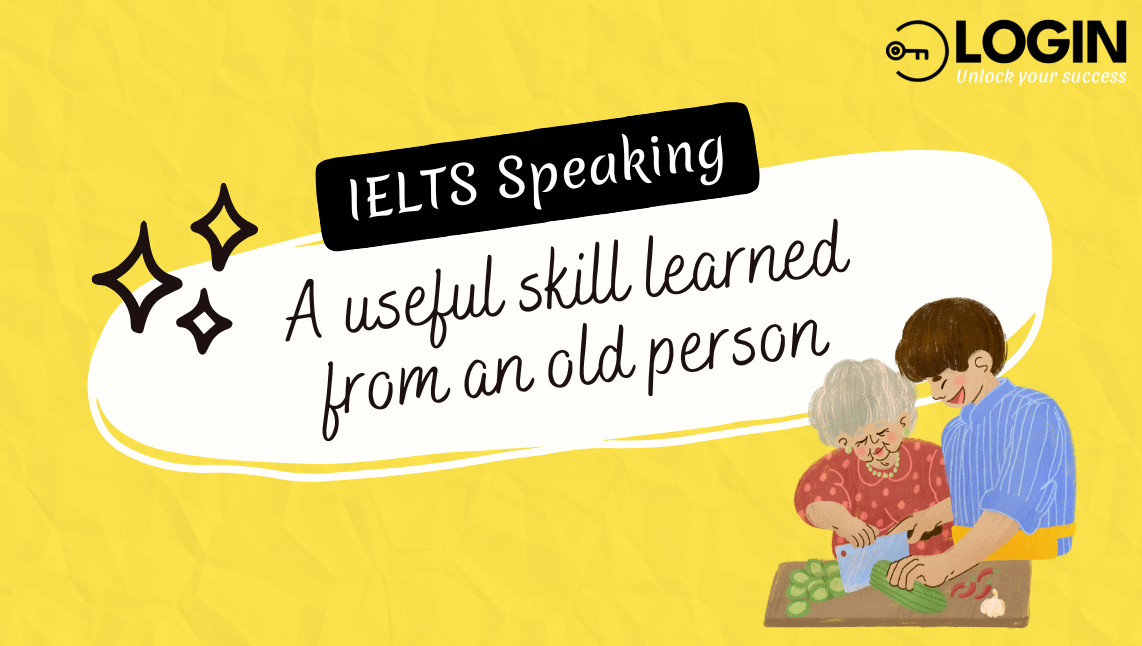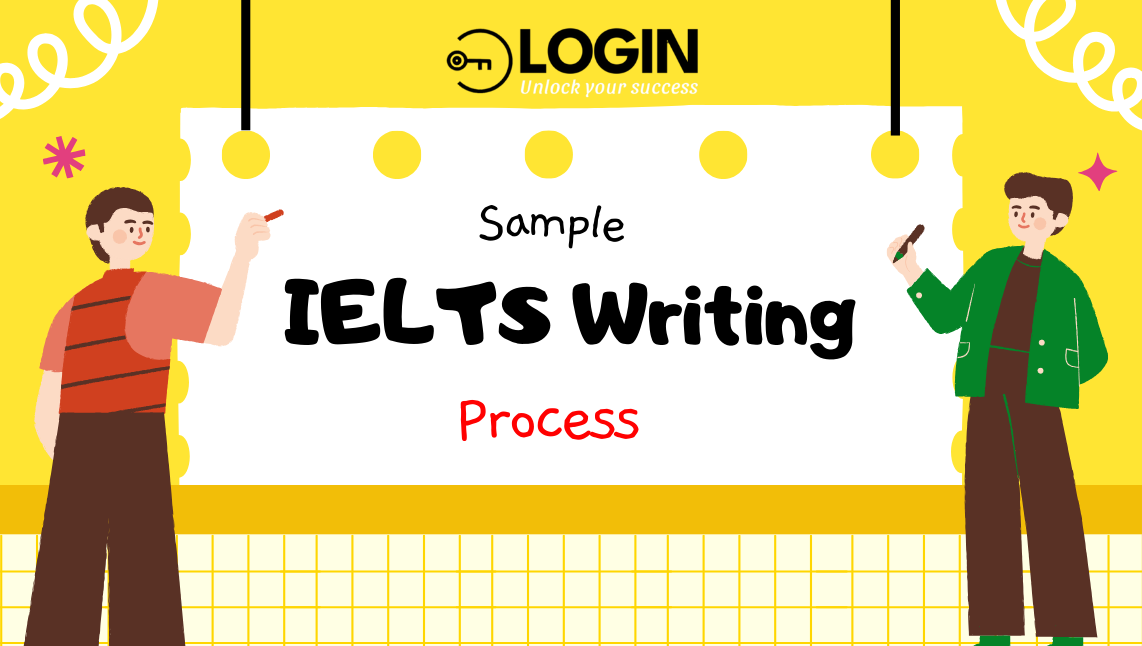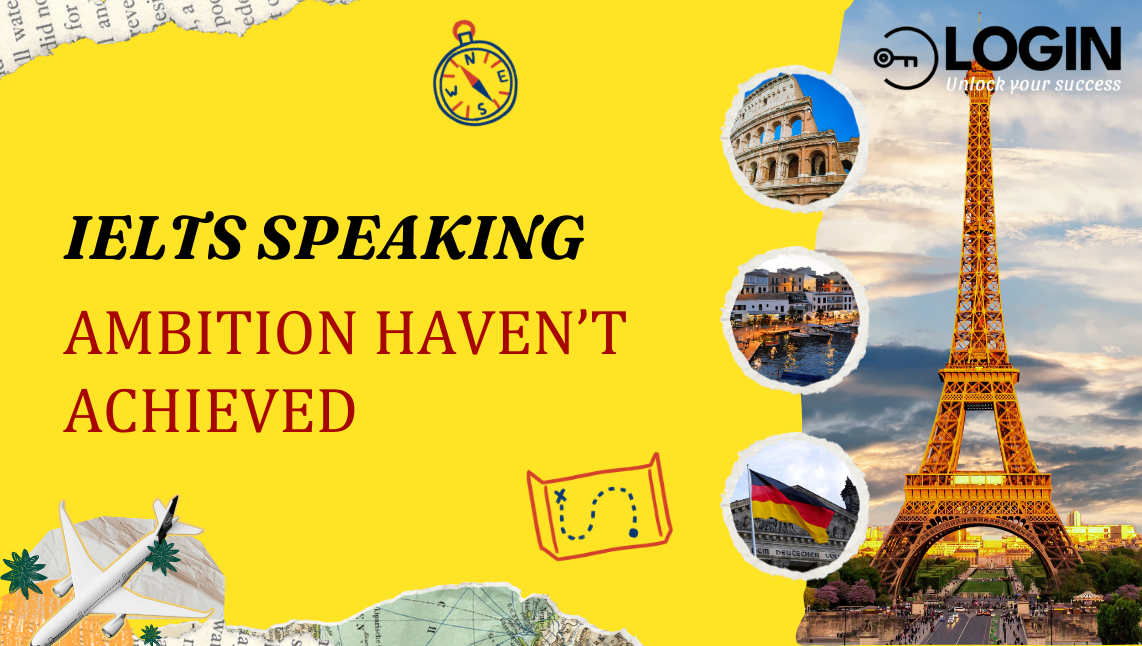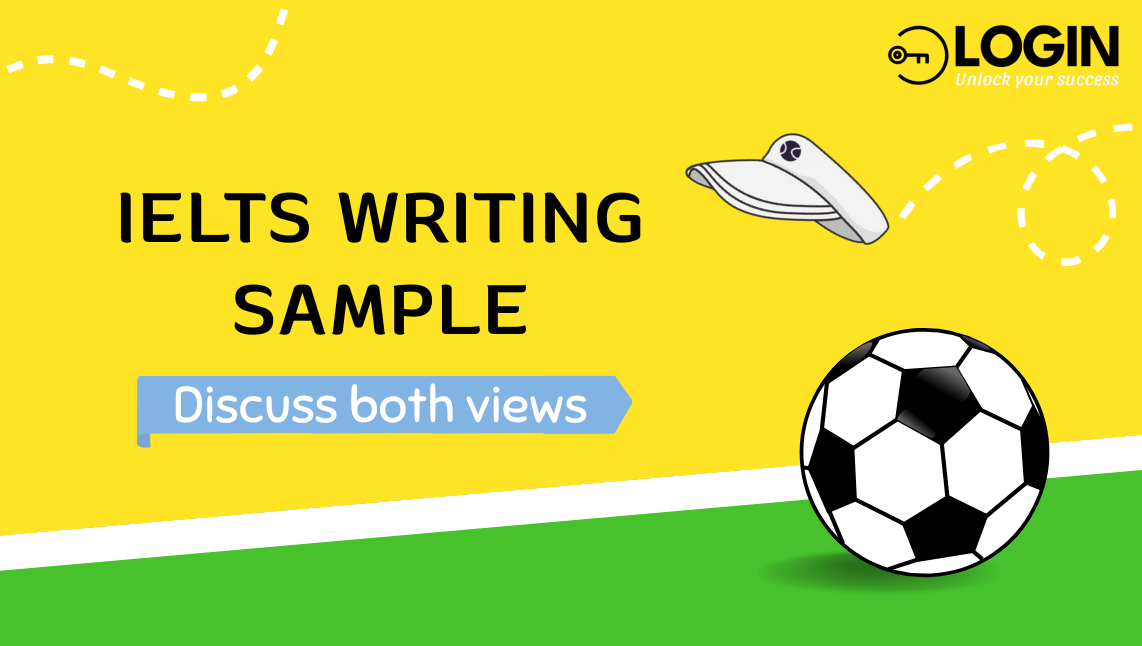Tiếp nối với bài đăng trước của về hướng dẫn giải đề và phân tích chi tiết IELTS Reading Vol 1 Test 3 trong bộ đề thi thật, trong buổi hôm nay IELTS Login sẽ đem đến cho bạn bài luyện tập thứ tư trong bộ đề này. Cùng tìm hiểu và luyện tập ngay nhé !
READING PASSAGE 1
Why good ideas fail
A. TF became a retail success in the 1970s when it succeeded in spotting homeware trends and meeting the needs of its then trendy young customers. However; by 2004, the TF stores were failing and a rethink was clearly necessary. Tibal Fisher, TF's founder and CEO, decided to change its focus under the new brand name of TFs NextStage. His aim was to recapture the now aging customers that had given him his early success and target consumers aged 60+ with devices and gadgets specifically designed to assist them with the problems associated with aging (Q1): mobile phones with screens that were easy to read; kitchen gadgets with comfortable grips; electronic devices that were easy to set and adjust. TF's market research proved to be very positive, showing strong consumer support for the products (Q2).
TF trở nên thành công trong lĩnh vực bán lẻ vào những năm 1970 nhờ khả năng nắm bắt xu hướng đồ gia dụng và đáp ứng nhu cầu của nhóm khách hàng trẻ thời thượng lúc bấy giờ. Tuy nhiên, đến năm 2004, các cửa hàng TF bắt đầu tụt dốc, và rõ ràng cần một sự thay đổi. Tibal Fisher – người sáng lập kiêm CEO của TF – đã quyết định thay đổi chiến lược dưới thương hiệu mới "TF’s NextStage". Mục tiêu của ông là thu hút lại nhóm khách hàng hiện đã lớn tuổi – những người từng góp phần làm nên thành công ban đầu – và nhắm tới người tiêu dùng từ 60 tuổi trở lên, với các thiết bị và đồ dùng được thiết kế đặc biệt để hỗ trợ họ vượt qua các vấn đề tuổi tác: điện thoại dễ đọc, đồ bếp có tay cầm thoải mái, thiết bị điện tử dễ điều chỉnh và thiết lập. Nghiên cứu thị trường của TF rất tích cực, cho thấy sự ủng hộ mạnh mẽ từ người tiêu dùng.
Meet the need (v phrase): đáp ứng nhu cầu
B. In 2007, the stores were remodeled at a cost of US $40 million and the new brand was launched (Q3). Each store was made more comfortable and featured a coffee shop to help increase traffic (Q4) - Tibal had predicted that if they could get customers into the stores then the products would sell themselves. However, by 2009 it was clear that the idea was a failure and the stores consistently remained empty. Customers complained that the new stores felt like a senior center and reminded them that they were growing old (Q5).
Năm 2007, các cửa hàng được cải tạo với chi phí 40 triệu USD và thương hiệu mới được ra mắt. Mỗi cửa hàng đều được thiết kế thoải mái hơn và có thêm quán cà phê để thu hút khách – Tibal tin rằng nếu lôi kéo được khách đến cửa hàng thì sản phẩm sẽ tự bán được. Tuy nhiên, đến năm 2009, ý tưởng rõ ràng đã thất bại – các cửa hàng vẫn vắng khách. Khách hàng than phiền rằng cửa hàng mới giống như trung tâm dưỡng lão và khiến họ cảm thấy mình đang già đi.
Feedback from expert
Expert 1: Donna Sturgess, global head of innovation, GlaxoSmithKline
C. The TF team's customer research efforts are a classic case of missing the subconscious associations at work in consumers' minds (Q6). Tibal and his executives looked only at surface attitudes. Since those attitudes make up a relatively small part of the total consumer response, the executives are clueless about the reason for the poor sales. It's critical for companies to understand that every customer relates to a brand emotionally, and it's those emotions that trigger - or block - purchases.
Nỗ lực nghiên cứu khách hàng của TF là ví dụ điển hình cho việc bỏ qua những liên tưởng tiềm thức trong tâm trí người tiêu dùng. Tibal và các lãnh đạo chỉ nhìn vào thái độ bề mặt. Vì những thái độ này chỉ chiếm một phần nhỏ trong phản ứng tổng thể của khách hàng, họ không hề hiểu lý do doanh số bán kém. Điều quan trọng là các công ty phải hiểu rằng mỗi khách hàng đều có sự kết nối cảm xúc với thương hiệu, và chính cảm xúc đó là yếu tố kích hoạt – hoặc ngăn cản – việc mua hàng.
Subconscious (n / adj): tiềm thức
Clueless (adj): không biết gì
Critical (adj): quan trọng, then chốt
Trigger (v): kích hoạt, gây ra
D. That's why we've focused on using emotional strategies behind branding for a number of years now. A great example is Alli (pronounced 'ally'), a drug to aid weight loss (Q7). The product deals with a highly emotional issue, so in marketing it, we faced the same challenge that the new TFstores are facing: the very thought of buying the product reminds customers that they have problems they feel negatively about. In the case of TF's NextStage, the problems are age and infirmity. In the case of Alli, the problems are excessive weight and all its consequences. There's always a risk that consumers' negative feelings will discourage them from starting or staying on a diet. So, after extensive market research, we took a number of steps to inject emotions into the whole process of using the product.
Đó là lý do vì sao chúng tôi đã tập trung vào chiến lược cảm xúc trong xây dựng thương hiệu suốt nhiều năm. Một ví dụ điển hình là Alli (phát âm như “ally” – đồng minh), một loại thuốc hỗ trợ giảm cân. Sản phẩm này liên quan đến vấn đề đầy cảm xúc, nên khi tiếp thị, chúng tôi gặp phải thách thức tương tự như TF: chỉ cần nghĩ đến việc mua sản phẩm đã khiến khách hàng cảm thấy mình có vấn đề tiêu cực. Với TF là tuổi già và bệnh tật, còn với Alli là thừa cân và những hệ lụy đi kèm. Luôn tồn tại rủi ro rằng cảm xúc tiêu cực sẽ khiến người tiêu dùng không bắt đầu hoặc bỏ cuộc giữa chừng. Vì vậy, sau khi nghiên cứu thị trường sâu rộng, chúng tôi đã thực hiện nhiều bước để đưa cảm xúc tích cực vào quá trình sử dụng sản phẩm.
Infirmity (n): bệnh tật
Market research (v): nghiên cứu thị trường
Inject (v): tiêm vào, đưa vào
E. First, we came up with a name that sounds like a helpful partner (Q8). We also aimed to make the container both beautiful and functional - something that didn't just hold pills but could later be used to store diet guides and recipes (Q9). Traditional market research is unlikely to uncover ideas like this, so we use a wide variety of techniques. Even simple techniques such as one-on-one interviews, or ethnographic observation that involves going into people's houses to examine their behavior, can provide valuable data (Q10).
Đầu tiên, chúng tôi chọn một cái tên nghe như người bạn đồng hành. Chúng tôi cũng thiết kế hộp đựng sao cho vừa đẹp vừa tiện – không chỉ đựng thuốc mà còn có thể dùng để lưu trữ tài liệu ăn kiêng, công thức nấu ăn. Các phương pháp nghiên cứu thị trường truyền thống thường không khám phá ra những ý tưởng như vậy, nên chúng tôi sử dụng nhiều kỹ thuật đa dạng. Thậm chí cả các phương pháp đơn giản như phỏng vấn cá nhân hoặc quan sát dân tộc học – tức là vào nhà người tiêu dùng để xem hành vi của họ – cũng có thể mang lại dữ liệu quý giá.
Ethnographic (adj): dân tộc học
Expert 2: Alex Lee, president of OXO International, maker of OXO Good Grips household products
F. This retailer can get back on track by remembering a principle that applies to consumers in general and those aged 60+ in particular: they're attracted by brands they associate with the type of people they'd like to be - not the type they really are. That's why marketing campaigns for surf gear feature surfers, not the city dwellers who will wear the products while doing their shopping.
Nhà bán lẻ này có thể đi đúng quỹ đạo nếu ghi nhớ một nguyên tắc áp dụng cho cả người tiêu dùng nói chung và người từ 60 tuổi trở lên nói riêng: họ bị thu hút bởi những thương hiệu gắn liền với hình mẫu họ muốn trở thành – chứ không phải là người họ thực sự đang là. Đó là lý do vì sao các chiến dịch quảng cáo cho đồ lướt sóng thường dùng hình ảnh vận động viên lướt sóng, chứ không phải người dân thành phố mặc chúng khi đi mua sắm.
Get back on track (v phrase): quay lại đúng hướng, đi đúng quỹ đạo
City dwellers (n): dân thành thị
G. I was reminded of this principle a few years ago when we wanted to find out how far we could apply our design philosophy of making things easier to use in order to move from our core business, kitchen tools, into other products. We conducted what are known as focus groups, where participants were asked to look at photos of people and pick those they are perceived to be users and non-users of our products (Q11). Consistently they picked people who looked fit as the sort who would use our products, and people who looked old and boring as the sort who wouldn't. Yet the participants, all owners of our products, looked a lot more like the latter than the former.
Tôi nhớ lại nguyên tắc này vài năm trước khi chúng tôi muốn mở rộng triết lý thiết kế “dễ sử dụng” từ đồ dùng bếp sang các sản phẩm khác. Chúng tôi thực hiện các nhóm tập trung, nơi người tham gia được xem ảnh và chọn ai là người dùng và không dùng sản phẩm của chúng tôi. Kết quả là họ luôn chọn những người trông khỏe mạnh là người dùng sản phẩm, còn người già và tẻ nhạt thì không. Tuy nhiên, chính những người tham gia – chủ sở hữu sản phẩm – lại giống nhóm sau hơn.
H. Although the needs of elderly users and those with deteriorating vision or dexterity are very much taken into consideration when we develop new designs, we try to offer that appeal to 20- and 30-year-olds. We believe that referring to these products as helping tools would serve only to harm the brand in our customers' eyes. That's why our philosophy of universal design, which involves creating products that are comfortably usable by the largest possible range of people, is never explicitly stated as part of our marketing position. We've found that market research does not need to be very sophisticated. For instance, we have conducted simple surveys in the lobby of our building offering free products in exchange for people's opinions (Q12). Some may call this unscientific but we have uncovered great insights this way. Sometimes the most important signals come from an executive's own instincts (Q13). In Tibal fisher's case, this could have told him what his surveys and focus groups didn't: 60-plus-year-olds won't support a business that expects them to act their age.
Dù chúng tôi luôn cân nhắc nhu cầu của người cao tuổi và người có vấn đề về thị lực hay vận động khi thiết kế sản phẩm, nhưng mục tiêu hình ảnh vẫn hướng đến nhóm 20-30 tuổi. Chúng tôi tin rằng việc gọi những sản phẩm này là “công cụ hỗ trợ” sẽ chỉ khiến hình ảnh thương hiệu bị giảm sút. Vì thế, triết lý thiết kế phổ quát – nghĩa là tạo ra sản phẩm ai cũng dùng được thoải mái – không bao giờ được chúng tôi nói rõ trong chiến lược tiếp thị. Chúng tôi nhận ra nghiên cứu thị trường không cần quá phức tạp. Ví dụ, chúng tôi từng khảo sát ngay tại sảnh công ty, tặng sản phẩm miễn phí để đổi lấy ý kiến. Có người gọi đây là thiếu khoa học, nhưng chúng tôi đã rút ra nhiều hiểu biết giá trị. Đôi khi, những tín hiệu quan trọng nhất lại đến từ chính trực giác của người lãnh đạo. Trong trường hợp của Tibal Fisher, trực giác đó có thể đã nói cho ông biết điều mà khảo sát và nhóm tập trung không chỉ ra: người trên 60 tuổi sẽ không ủng hộ một doanh nghiệp kỳ vọng họ hành xử đúng với tuổi thật của mình.
Deteriorate (v): xấu đi, tồi tệ đi (về tình trạng, chất lượng)
Take into consideration (v phrase): cân nhắc, xem xét
Appeal (v / n): kêu gọi, hấp dẫn
Questions 1 - 5
Do the following statements agree with the information given in Reading Passage 1?
In boxes 1-5 on your answer sheet, write
TRUE if the statement agrees with the information
FALSE if the statement contradicts the information
NOT GIVEN if there is no information on this
1. The TF NextStage stores planned to sell products to make life easier for older people.
2. TF's market research indicated that people liked the products.
3. It cost more than expected to remodel the TF stores.
4. The TF NextStage coffee shops sold their own brand of food and drink.
5. TF NextStage customers liked the atmosphere in the new stores.
Questions 6 - 13
Complete the notes below.
Choose NO MORE THAN TWO WORDS from the passage for each answer.
Write your answers in boxes 6-13 on your answer sheet.
Feedbacks from experts
Donna Sturgess
Problems with customer research:
- TF team limited their research to attitudes that occur at a 6 .......................... level in customers' minds
- TF didn't consider customers' emotions
How my company dealt with a similar problem:
- Product: Alli
- Use: help people achieve 7.................................
- Marketing aim: help customers see the product a positive way by:
- Giving the product a 8 ................................ that seems helpful and supportive
- Giving the product a reusable 9...............................
Market research
- Does not need to be complex
- Good information can come from interviews or studying the 10 ………....... of consumers in the home
Alex Lee
Problem:
- Customers are attracted to the ideal not the reality, e.g. ads for surf gear
How my company dealt with a similar problem:
- We organized 11....................................... to find out what images customers associate with our products
- We do not call our products helping tools in our marketing campaigns
Market research:
- Can be basic, e.g. by doing 12...................................
- Company executives should follow their 13...................................
PHÂN TÍCH ĐÁP ÁN
Questions 1-5
1. The TF NextStage stores planned to sell products to make life easier for older people.
Keywords: TF NextStage stores ; sell products ; life easier
Thông tin nằm ở: đoạn A “His aim was to recapture the now aging customers that had given him his early success ..... assist them with the problems associated with aging”
Paraphrasing:
| Từ vựng trong câu hỏi | Từ vựng trong bài đọc |
|
products |
= devices and gadgets |
|
make life easier for older people |
= assist them with the problems associated with aging |
=> Đáp án: TRUE
2. TF's market research indicated that people liked the products.
Keywords: market research ; people ; liked ; products
Thông tin nằm ở: đoạn A câu cuối "TF's market research proved to be very positive, showing strong consumer support for the products"
Paraphrasing:
| Từ vựng trong câu hỏi | Từ vựng trong bài đọc |
| liked the products | = strong consumer support for the products |
=> Đáp án: TRUE
3. It cost more than expected to remodel the TF stores.
Keywords: cost more ; expected ; remodel ; stores
=> Đáp án: NOT GIVEN
4. The TF NextStage coffee shops sold their own brand of food and drink.
Keyword: coffee shop ; sold ; own brand ; food and drink
=> Đáp án: NOT GIVEN
5. TF NextStage customers liked the atmosphere in the new stores.
Keywords: customers ; liked ; atmosphere ; in new stores
Thông tin nằm ở: đoạn B câu cuối "Customers complained that the new stores felt like a senior center and reminded them that they were growing old"
Paraphrasing:
| Từ vựng trong câu hỏi | Từ vựng trong bài đọc |
| liked the atmosphere | >< complained |
=> Đáp án: FALSE
Questions 6-13
6. TF team limited their research to attitudes that occur at a 6 .......................... level in customers' minds
Phân tích từ loại: Từ cần điền là danh từ (dạng số ít).
Keywords: attitudes ; occur ; consumers' minds
Thông tin nằm ở: Đoạn C “The TF team's customer research efforts are a classic case of missing the subconscious associations at work in consumers' minds.”
Paraphrasing:
| Từ vựng trong câu hỏi | Từ đồng nghĩa trong bài đọc |
| customers' minds | = consumers' minds |
=> Đáp án: subconscious
7. Use: help people achieve 7.................................
Phân tích từ loại: Từ cần điền là danh từ.
Keywords: help ; achieve
Thông tin nằm ở: Đoạn D “A great example is Alli (pronounced 'ally'), a drug to aid weight loss”
Paraphrasing:
| Từ vựng trong câu hỏi | Từ đồng nghĩa trong bài đọc |
| help | = aid |
=> Đáp án: weight loss
8. Giving the product a 8 ................................ that seems helpful and supportive
Phân tích từ loại: Từ cần điền là một danh từ (dạng số ít).
Keywords: helpful ; supportive
Thông tin nằm ở: Đoạn E “First, we came up with a name that sounds like a helpful partner”
Paraphrasing:
| Từ vựng trong câu hỏi | Từ vựng trong bài đọc |
| seems | = sounds like |
| helpful and supportive |
= a helpful partner |
=> Đáp án: name
9. Giving the product a reusable 9...............................
Phân tích từ loại: Từ cần điền là một danh từ (dạng số ít).
Keywords: reusable
Thông tin nằm ở: Đoạn E “We also aimed to make the container both beautiful and functional - something that didn't just hold pills but could later be used to store diet guides and recipes”
Paraphrasing:
| Từ vựng trong câu hỏi | Từ vựng trong bài đọc |
|
reusable |
= later be used |
=> Đáp án: container
10. Good information can come from interviews or studying the 10 ………....... of consumers in the home
Phân tích từ loại: Từ cần điền là một danh từ.
Keywords: good information ; interviews ; studying ; consumers ; in home
Thông tin nằm ở: Đoạn E “Even simple techniques such as one-on-one interviews, or ethnographic observation that involves going into people's houses to examine their behavior, can provide valuable data”
Paraphrasing:
| Từ vựng trong câu hỏi | Từ vựng trong bài đọc |
| study | = examine |
| consumer in the home |
= going into people's houses |
=> Đáp án: behavior
11. We organized 11....................................... to find out what images customers associate with our products
Phân tích từ loại: Từ cần điền là một danh từ.
Keyword: organized ; find out ; images ; associate with ; products
Thông tin nằm ở: Đoạn G “We conducted what are known as focus groups, where participants were asked to look at photos of people and pick those they are perceived to be users and non-users of our products”
Paraphrasing:
| Từ vựng trong câu hỏi | Từ vựng trong bài đọc |
| images | = photos |
| associate with our products |
= perceived to be users and non-users of our products |
=> Đáp án: focus groups
12. Can be basic, e.g. by doing 12...................................
Phân tích từ loại: Từ cần điền là một danh từ.
Keyword: basic ; doing
Thông tin nằm ở: Đoạn H “We've found that market research does not need to be very sophisticated. For instance, we have conducted simple surveys in the lobby of our building offering free products in exchange for people's opinions.”
Paraphrasing:
| Từ vựng trong câu hỏi | Từ vựng trong bài đọcc |
| can be basic | = not very sophisticated |
=> Đáp án: simple surveys
13. Company executives should follow their 13...................................
Phân tích từ loại: từ cần điền là một danh từ.
Keywords: executives ; follow ; their
Thông tin nằm ở: Đoạn H “Sometimes the most important signals come from an executive's own instincts”
Paraphrasing:
| Từ vựng trong câu hỏi | Từ vựng trong bài đọc |
|
company executives |
= executive |
=> Đáp án: instincts
Trên đây là phần Dịch đề và giải thích đáp án chi tiết của Passage 1 (Actual Test - Vol 1 Test 4), để tìm hiểu chi tiết Passage 2 và 3 của Test 4, các bạn có thể xem và luyện tập qua đường link dưới đây:
Dịch đề và giải thích đáp án chi tiết 3 Passage (Actual Test - Vol 1 Test 4)
Xem thêm:
Dịch đề và phân tích đáp án chi tiết IELTS Reading (Actual Test - Vol 1 Test 1)
Dịch đề và phân tích đáp án chi tiết IELTS Reading (Actual Test - Vol 1 Test 2)
Dịch đề và phân tích đáp án chi tiết IELTS Reading (Actual Test - Vol 1 Test 3)
_________________
Biên soạn bởi IELTS Login Academic Team
- Dịch đề và phân tích đáp án chi tiết IELTS Reading (Actual Test - Vol 1 Test 4)
- IELTS Speaking Part 2+3: Describe a rule (in school or work) that you don’t like (Sample Answer)
- Bài mẫu IELTS Writing Task 2 - Giải đề thi thật
- Giải đề IELTS Listening (Actual Test - Vol 1 Test 1)
- IELTS Speaking Part 2+3: Describe a useful skill you learned from an older person (Sample Answer)
- Bài mẫu IELTS Writing Task 1 - Giải đề thi thật
- IELTS Speaking Part 2+3: Describe an ambition that you haven’t achieved (Sample Answer)
- Bài mẫu IELTS Writing Task 2 - Giải đề thi thật


